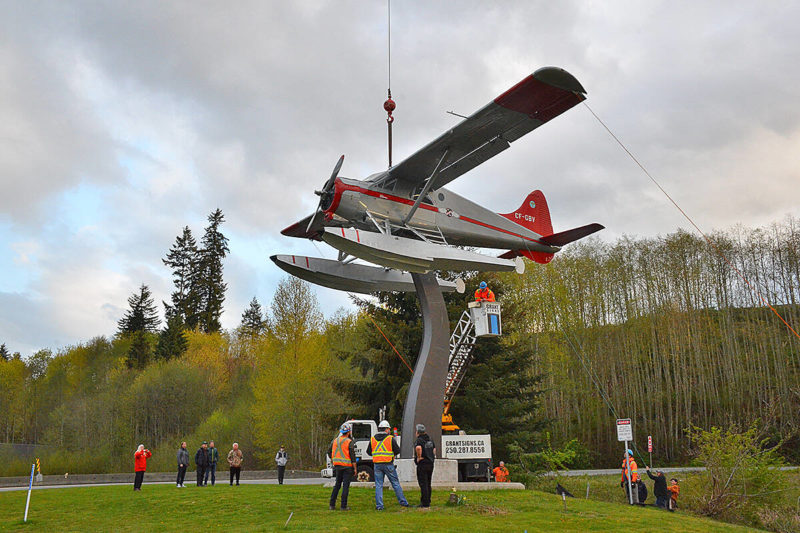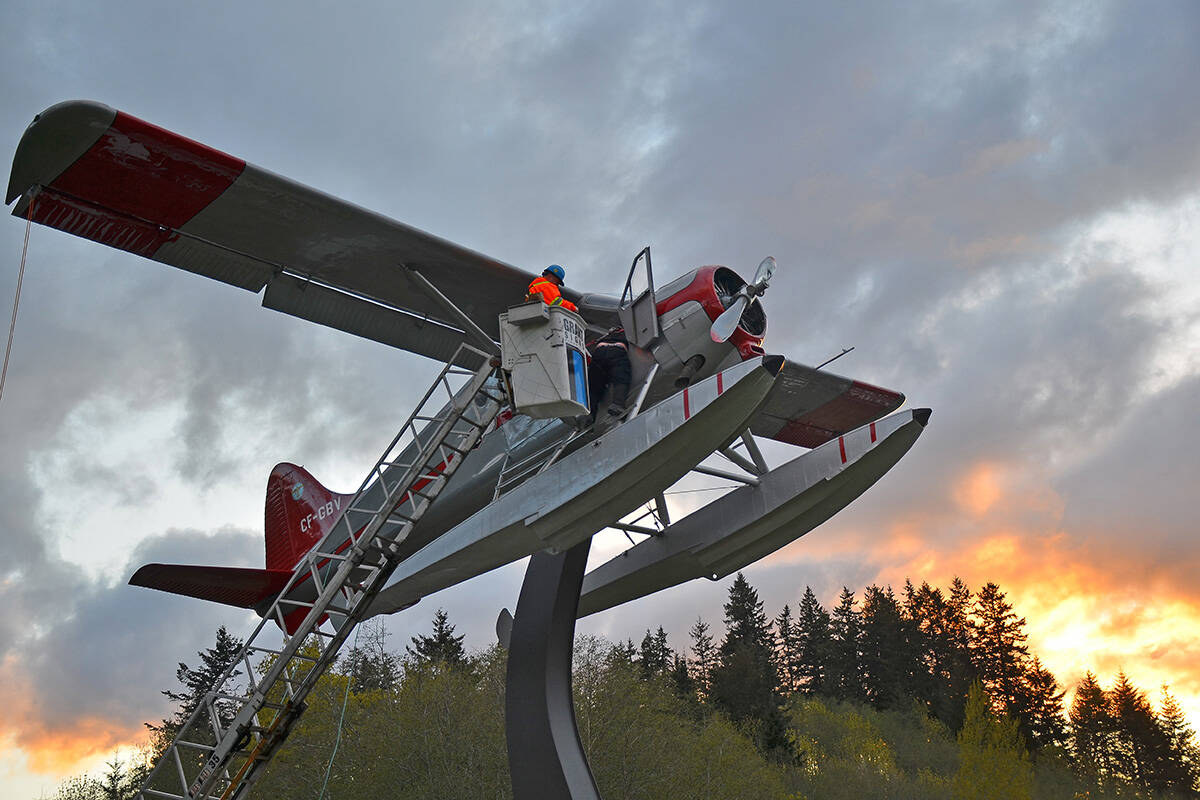By Morgan Ostler
Aviation enthusiasts and history buffs have a new stop to include on their Campbell River itinerary.
The long-awaited installation of the famous Beaver floatplane was hoisted onto a display pedestal at the Campbellton entrance to Campbell River April 25. The installation commemorates a significant period in the city’s history.
The Tyee Spit, a long strip of land which juts out into the Campbell River estuary, was considered the busiest floatplane base in Canada in 1966. The much-admired de Havilland Beaver, amongst many aircraft that used the Spit, was known as the “Workhorse of the North.” Although that famous plane was first constructed in 1947, it was no longer built by de Havilland Canada after 1967. Still, the Beaver continued to lead the way in the charter industry for the next half century.
In those halcyon days, up to 10 floatplane companies on the Spit were serving not only the forest and fishing industries but the requirements of many isolated communities. The recent installation also recognizes Sealand Aviation and the many supporting businesses.
In those early days, Campbell River floatplane operators played an integral role in supporting the requirements of many industries, including logging operations, First Nations villages, resort owners, commercial fishermen, fish processors, mining companies, prospectors and settlers in isolated areas.
The idea of a floatplane as an eye-catching symbol for the Campbellton entrance to the City of Campbell River was born 10 years ago. The newly established Campbellton Neighbourhood Association was casting around for ideas on how to upgrade that entrance to the city.
Conversations with director Jonathan Calderwood and Coun. Ron Kerr led to a meeting with Sealand Aviation owner Bill Alder.
The idea of installing a floatplane on a pedestal topped the list of ideas. Alder embraced the suggestion of a Beaver floatplane but there were no old Beavers lying around that could be restored. However, he had bits and pieces of old Beavers in storage and he figured it may be possible to construct the aircraft with genuine parts. The only part missing was the engine but due to Alder’s determination, he eventually hit gold with a search on Craigslist that produced a Beaver engine which had been stored in the owner’s barn for many years.
Reconstruction began but it was slow going over the years. Sealand was growing at the time and demanded much of Alder’s time and much of the work was done with volunteer hours.
Through the years, many seaplane operators have chosen Campbell River’s Tyee Spit for their base of operations because it offers an exceptionally safe and sheltered floatplane moorage on the east side of Vancouver Island. Currently, three companies offer flight service from the Spit: Vancouver Island Air, Coral Air and West Coast Helicopters.
Tourism has become a large part of the Spit’s floatplane business these days because it provides direct access to the fishing resorts, wildlife tours, First Nations cultural sites or rendezvousing with waiting yachts.
Plan your adventures throughout the West Coast at westcoasttraveller.com and follow us on Facebook and Instagram @thewestcoasttraveller. And for the top West Coast Travel stories of the week delivered right to your inbox, sign up for our weekly Armchair Traveller newsletter!












 Transport Canada introduces added measures to protect southern resident killer whales
Transport Canada introduces added measures to protect southern resident killer whales